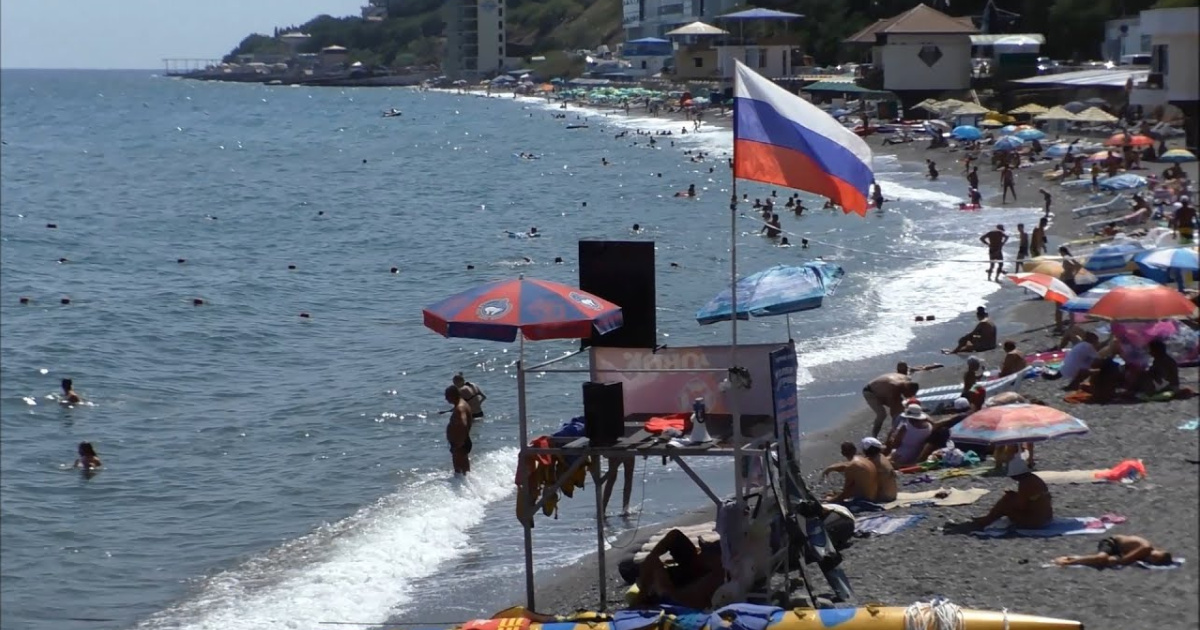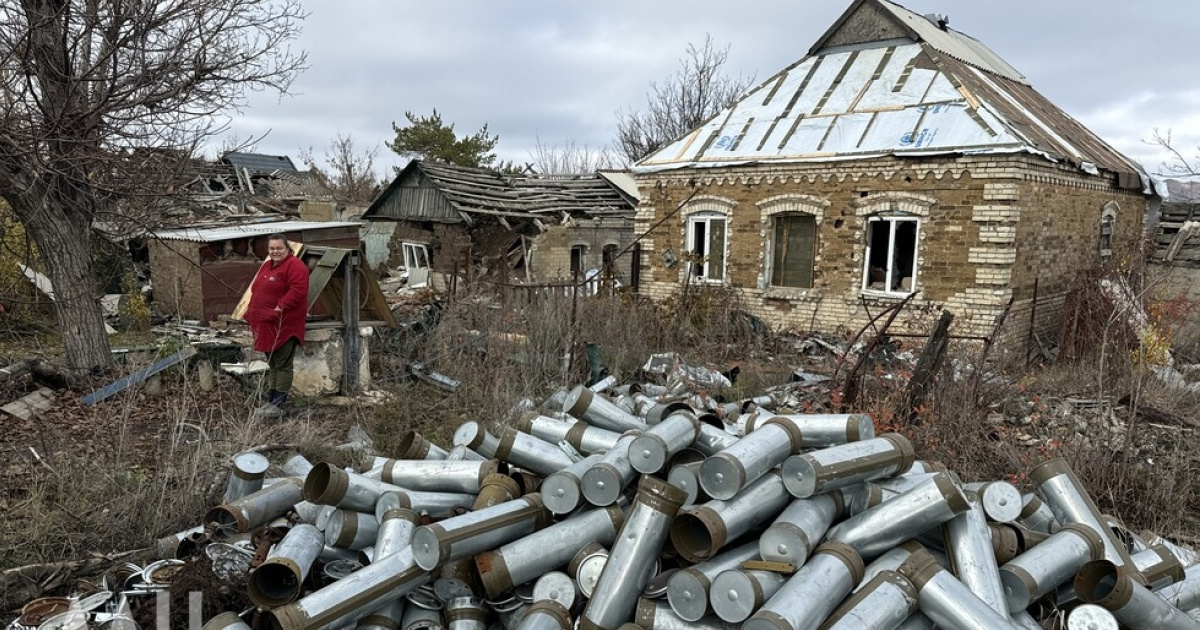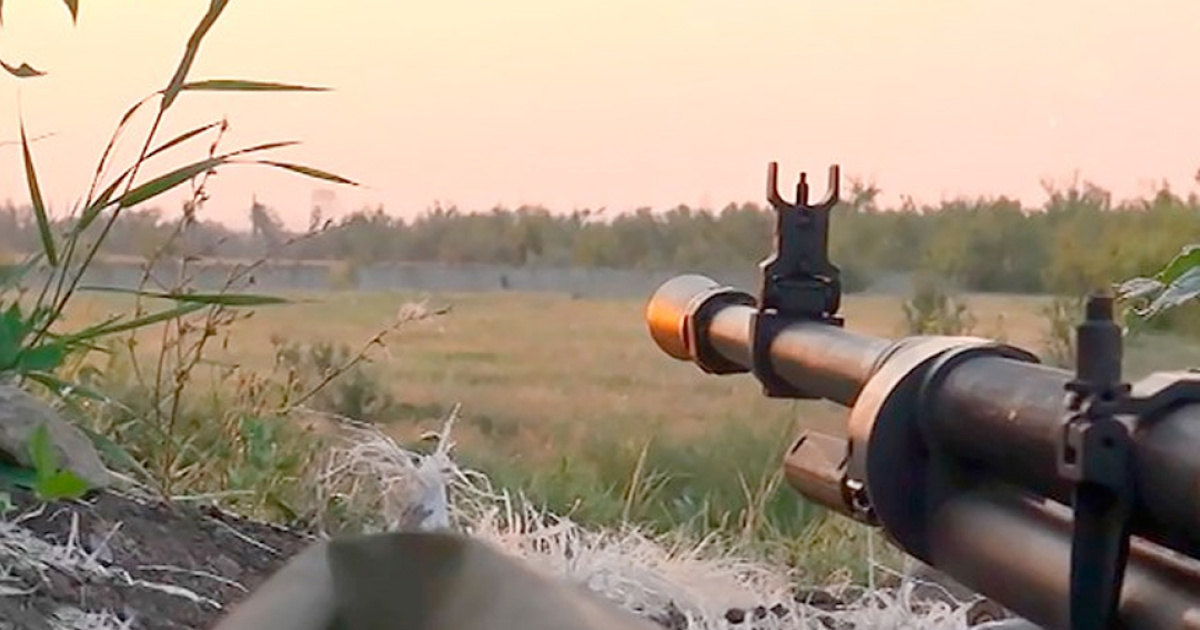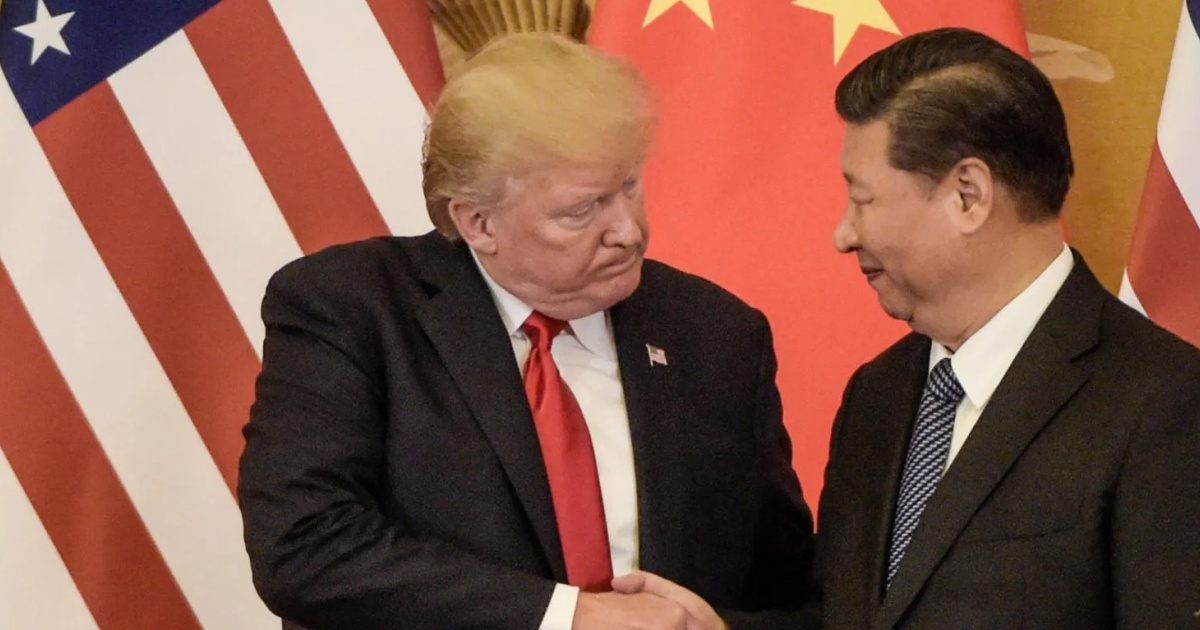
The occupation authorities are calling the 2025 holiday season the best in five years. The “Ministry of Resorts of Crimea” reported that from the beginning of the year to July 31, the peninsula received 3.74 million vacationers, which is 14% more than in the same period of 2024. The average hotel occupancy at the start of summer was 67%, while in Saky, Yevpatoria, and Yalta it was 77%, 74%, and 73%, respectively.
By the end of the season, officials forecast up to seven million vacationers and claim that hotel occupancy in coastal cities is reaching 96–98%.
The increase in tourist flow is facilitated by the closure of summer infrastructure in other russian resorts. For example, one of the reasons for success is that Crimea received 300–400 thousand “Anapa” tourists, said Sergey Romashkin, general director of the tour operator “Delfin”.
Behind the attractive statistics lie systemic problems. Crimean resorts face record queues on the bridge, mobile internet shutdowns, train delays, no air connections, price hikes, and the constant threat of drone and missile strikes.
“We have been working with clients for more than ten years, and we can say that this year Crimea is a test of endurance. Tourists encounter difficulties even before they reach the resort: hours-long queues on the Kerch Bridge, train delays, the inability to arrive by plane. Add to this the regular mobile internet shutdowns, constant air raid alerts when people are forced to interrupt their vacation and look for shelter”, - a representative of one of the Crimean tour operators told OstroV.
According to him, the high cost of accommodation and food makes the situation even worse.
“People pay big money but in return get stress, discomfort, and a lack of basic safety. At the same time, people are coming this year — this must be honestly admitted. Some out of nostalgia, some on state-funded trips, some just looking for a cheaper seaside vacation”, - he emphasized.
OstroV tried to find out how real the “success” of the 2025 season is and what lies behind the figures of russian reporting.
What’s behind the statistics
Experts from the russian Union of the Tourism Industry note that the tourist flow increased by 20–25% precisely because in 2022–2024 it had sharply fallen. In addition, over the past years many small hotels have closed, so they are not included in the occupiers’ official statistics.
According to one representative of a Crimean tour operator, who wished to remain anonymous for security reasons, the closure of small hotel businesses is happening on a massive scale and unnoticed by statistics.
“In the past three years, dozens of small guesthouses and private mini-hotels have disappeared from the map. Many owners simply could not bear the costs of maintaining the properties, especially given rising utility, food, and service prices. Some sold their real estate, others froze their business until ‘better times’. But this is not recorded in the official reports — it turns out that we supposedly have a stable hotel stock, while in reality the tourist’s choice has shrunk by a third”, - the source explained.
According to him, the absence of an updated database of accommodation facilities leads to a distorted picture of resort occupancy.
“It’s a paradox — statistics show a high booking percentage, but that’s because there are fewer hotels operating. If you look at absolute numbers, there are fewer tourists than in the pre-COVID years”, - he added.
Logistics: the road that turned into a trap
One of the main problems of the 2025 season remains traffic jams on the Kerch (Crimean) Bridge — the only consistently functioning transport artery connecting the peninsula with russia’s territory. Despite statements from the occupation authorities about “uninterrupted movement”, the reality is different: on peak days, car lines stretch for tens of kilometers, and waiting times can reach from 5–6 hours to a full day. On August 4, an anti-record was set — a 35 km traffic jam where more than 4,000 cars accumulated.
Drivers complain that checks at checkpoints have become significantly more thorough and lengthy. This is due not only to bureaucracy but also to increased security measures after drone attacks and explosions on the bridge in previous years. As a result, throughput has dropped, and tourists’ nervous tension has risen.
“We waited for nine hours in the heat. The children were crying, the water ran out, and for the toilet — you could do your business only in the field. And we were scared all the time: what if something comes flying again right now?”, - a family from Krasnodar, heading for a vacation in Feodosia, wrote on social media.
Night hours add particular tension: many drivers try to cross the bridge specifically at night, hoping to avoid traffic jams, but end up creating night “tails”. At the same time, waiting infrastructure is practically non-existent — there are not enough toilets, shelters, drinking water points, or even basic lighting.
The security factor only increases the negativity. Tourists are forced to travel across an object that has repeatedly been targeted in attacks. Many drivers openly admit in local public social media pages that they try to “rush across the bridge as quickly as possible, nervously glancing at the sky or at the water on both sides”.
“This is no longer about rest, it’s about an extreme quest”, - says a resident of the Rostov oblast who was driving his family to Sevastopol.
Tour operators admit that the problem of queues negatively affects the resort’s image.
“Some clients refuse to go after learning about possible multi-hour delays. For families with children or elderly people, this is a serious stress, and after such a trip the vacation begins with exhaustion, not relaxation”, - comments a representative of one of the Crimean agencies.
According to information from open sources and russian media, in June–July the number of cars crossing the bridge on weekends exceeded pre-war figures by 20–30%, while the facility’s throughput capacity has remained unchanged. Combined with heightened inspections, this creates chronic transport collapse, which the occupation authorities have still not learned to solve effectively.
The queues are caused not only by the increase in the number of tourists but also by strict security measures. On the bridge, heightened inspection rules are in force: every car and luggage undergo manual inspection.
Since the start of the full-scale invasion, airports in occupied Crimea have been closed. In August 2025, kremlin press secretary Dmitry Peskov once again repeated that Simferopol airport would not operate until passenger safety could be guaranteed. Because of this, tourists are forced to travel by car, bus, or train.
Railway service also cannot handle the load, and trains are constantly delayed. For example, on July 19, the company “Grand Service Express” reported that as of 16:00 moscow time, 16 trains heading to and from Crimea were delayed. In the opposite direction, trains were also delayed from 1.5 to 4.5 hours.
Even a long journey does not guarantee comfort. In open-plan carriages, regular passengers spend almost 30 hours when trains run on schedule.
To reassure tourists, occupation officials issue recommendations. The so-called head of Crimea, Sergey Aksyonov, in April urged motorists to travel through the “historic regions of the country that returned to russia in 2022”. According to him, this route is safe and the “pass control regime” there works without problems. He also promised that by May 1, an additional lane for traffic and vehicle inspection would be introduced on the approach to the Crimean Bridge from the Krasnodar oblast side, and that repair work on the Yalta–Simferopol highway would be moved to nighttime hours. Reality shows that these measures only partially reduce queues, and by the end of July the situation had again become critical.
Mobile internet shutdowns and increased control
Another surprise for tourists was the periodic shutdown of mobile internet. In July, the defense headquarters of occupied Crimea announced that from August 1, mobile internet on the peninsula and in more than 60 regions of russia would be shut off for several hours or even days. The occupation authorities explain that this is done to combat enemy drones. Travelers are advised to write down phone numbers in advance, withdraw cash, and use Wi-Fi in cafes or hotels, as payment terminals may fail.
“Mobile internet will be shut off in rolling blackouts in the south of the Russian Federation and in Crimea by federal order, without the involvement of local authorities, for several hours or even days. This is done to counter attacks and to eliminate the possibility of controlling and guiding drones”, - said Oleg Kryuchkov, adviser to the “head of Crimea”.
Very often, because of this, contactless payments do not work, which leads to new queues near ATMs. The lack of mobile communication is also felt in emergency situations: in the event of a traffic accident or a drone attack, people cannot promptly call for help.
Representatives of the Crimean tourism industry admit that mass mobile internet shutdowns deal a serious blow to the resort’s image. Many clients, after their first experience of vacationing in “offline mode”, do not plan to return.
“People come to Crimea expecting a vacation by the sea, but instead they face digital isolation. For many holidaymakers, this becomes a serious problem: without the internet, it is impossible to plan a route, check the transport schedule, or find up-to-date information about excursions and dining establishments. Businesses also suffer: restaurants and hotels cannot process online orders, and cashless payments sometimes become impossible. It is especially difficult for those traveling with children — without the internet, you cannot even call a taxi or check the operating hours of the water park”, - the owner of a Crimean travel agency told OstroV.
According to him, the shutdown of mobile internet not only creates inconvenience, but also heightens the overall sense of danger.
“Tourists perfectly understand that such measures are connected to the military situation. This adds to the anxiety and undermines the very idea of the holiday season. People came to relax, not to feel like they are in a war zone”, - the source emphasized.
Prices and inflation
Another painful topic this season has been the record-high prices for vacations and food. Despite the occupation authorities’ statements about an “affordable Crimea”, in practice, the cost of accommodation, food, and basic services turned out to be higher than at many popular resorts in Krasnodar Krai or even in Turkey.
The russian union of the tourism industry admits that accommodation prices have risen by 18–20% compared to 2024, while hotel operators speak of a 10–30% increase. The russian service “Ostrovok” records an 80% growth in bookings in Crimea, which is causing average room rates to rise. The director of the tour operator “Multitour” confirms that prices have increased by about 20%, while the number of bookings is up by 35–37%.
Media reports tell stories of budget tours for two in the high season starting from 25,000 rubles ($310), and that’s only for the cheapest hotels. For comparison: in 2024, a similar package cost around 20,000 rubles. Crimean hoteliers justify this by citing high demand and logistical costs: delivering food and construction materials across the bridge is becoming more expensive.
According to tourists and locals, hotel and guesthouse prices have risen by 20–40% over the past year, and in some cases doubled. At the same time, service and infrastructure have remained at previous years’ levels or even worsened.
“Our friends from the moscow oblast paid 9,000 rubles per night for an ordinary three-star hotel in Yalta, and got a room with outdated furniture and water supply interruptions. In Turkey, for this money, you can get all-inclusive on the seashore with entertainment and meals five times a day”, - Maria, a resident of Simferopol, told OstroV.
A similar situation applies to food products. Locals admit that prices for vegetables, fruits, and dairy products have risen so much that even during the season of cheap harvests, buying them has become burdensome.
“A kilogram of cherries in June cost 600–700 rubles ($8.5), milk — over 100 rubles ($1.25) per liter. Meat and fish prices are same as in moscow, only with worse selection. It’s very unpleasant that during the summer tourist season, prices are raised for all residents”, - said Mikhail, a resident of Sevastopol.
In the spring of 2025, inflation in Crimea reached 12.9% year-on-year — higher than the average in russia (10.23%). The sharpest price increases were for ice cream, cookies, chocolate, chicken, and pork. Sanatorium vouchers rose by 23%, railway tickets by 15.7%, and summer rates (June–August) are traditionally 20–40% higher than in May or September.
“People are counting their money and realizing that for the same amount, they can go to the russian mainland or abroad, where service and choice are better. This is especially acute for families with children — food, entertainment, and transport in Crimea are expensive, and the quality doesn’t match the cost”, - one of the tour operators commented.
Local restaurateurs add that they too have found themselves in a difficult position: rising costs for food, logistics, and rent force them to raise prices, but this hits attendance.
Security: air raid alerts and UAV attacks
Despite the occupation authorities’ attempts to present Crimea as a “quiet haven” for tourists, the security situation on the peninsula remains tense. In 2025, air raid alerts, explosions, and drone attacks have become routine even in traditionally popular resort towns.
An air raid alert can sound several times a day and at night, and in most areas it is accompanied by the shutdown of sirens, with notifications coming only through official apps or local Telegram channels. Tourists and locals complain that they often learn about the danger only after an explosion.
“We were sitting in a café in the center of Sevastopol when we heard a loud ‘pop’. Only a few minutes later came a message that a UAV attack was underway. No one explained where to run or where to hide. On the other hand, it’s already become an everyday thing”, - recalls Svetlana, a resident of Sevastopol.
The problem is worsened by the lack of a developed shelter network. In many resort towns, there are no officially equipped shelters, and the basements of hotels or cafés are rarely suitable for people to stay in.
“There seem to be shelters, but they are very few, and still in poor condition”, - says local resident Mikhail.
Tour operators admit that due to the constant security risk, some tourists shorten their stay or cancel the trip altogether.
“After several alerts in one day, a vacation stops being a vacation. People came to the sea and got a nerve-wracking marathon with suitcases at the ready”, - comments a representative of one of the Crimean agencies.
In July, Aksyonov signed a “decree” banning the publication of footage of air defense operations or the aftermath of attacks. Violations are punishable by fines and even criminal cases. Such restrictions show how serious the threat is and how the authorities are trying to control the information field.
Life behind the resort façade
The 2025 holiday season in occupied Crimea is an illustration that tourist flow figures alone do not guarantee success. The increase in tourist numbers is accompanied by chronic logistical problems, the absence of air travel, the disappearance of mobile internet, hours-long queues on the bridge, and train delays.
Inflation and high demand have driven up the cost of accommodation and food, while official sources insist that prices are stable. Instead, tourists complain that in cafés a cup of coffee can cost more than 200 rubles (as in central moscow), and that dinner prices are on par with European capitals.
Periodic drone attacks, the ban on filming air defense operations, and mobile internet shutdowns create an atmosphere of a front-line zone. On August 6, the russian Ministry of Defense reported 12 drones shot down over Crimea. This was just one of many nights.
The measures declared by the occupying authorities (opening additional lanes, setting up checkpoints, recommending travelers to plan trips) do not solve structural problems. As long as Crimea remains an isolated military enclave, deprived of aviation and cut off from Ukraine, the tourist boom will resemble a queue at an inspection point. Without resolving these issues, the russian authorities will continue to be forced to offset falling demand with a pretty picture, while residents and tourists alike will look for alternative vacation options.
By Andrii Andrieiev, journalist for OstroV





